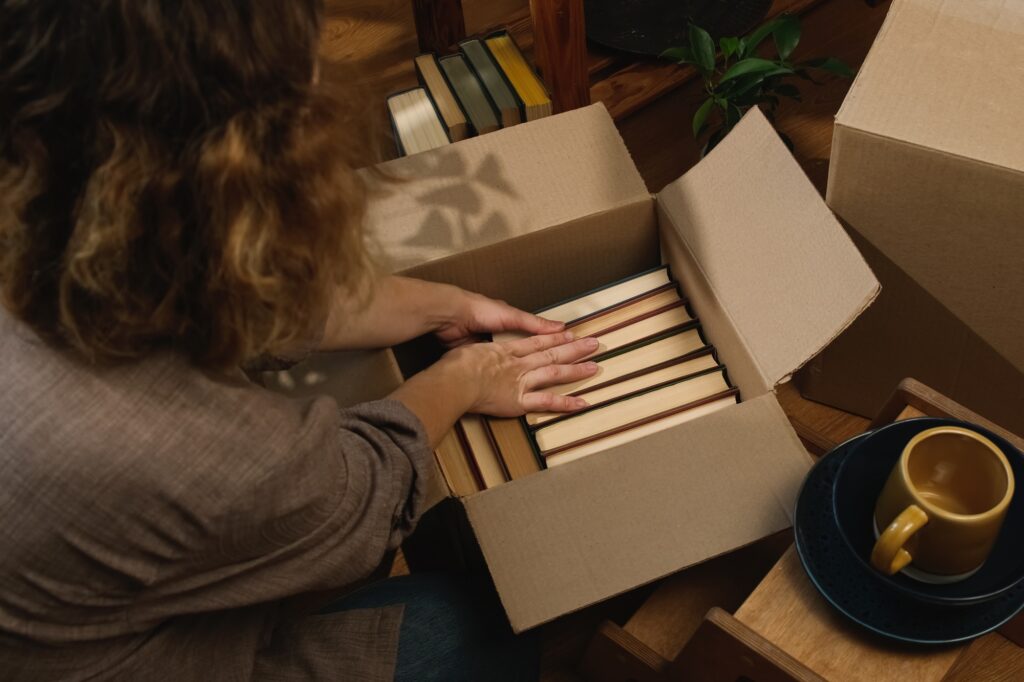Best Way to Pack Books for Moving
Moving to a new home often means taking with you the personal items that hold meaning and memories. For many, books are at the top of that list. Whether you own a small collection or an entire library, packing books correctly is essential to keep them safe and in good condition during transit. Asking yourself what is the best way to pack books for moving is the first step toward ensuring that your treasured volumes arrive intact. Books may seem easy to move—they aren’t fragile like glassware, and they don’t require assembly like furniture—but they are deceptively heavy. Improper packing can lead to damaged covers, bent pages, and strained backs for those lifting the boxes. By understanding the techniques, materials, and strategies involved, you can make the process smoother and safer.

Understanding the Challenges of Moving Books
The first thing to remember about finding the best way to pack books for moving is that books add weight quickly. A single small box can weigh 30 to 40 pounds when full. Overpacking large boxes with books not only makes them difficult to lift but also increases the risk of boxes breaking or tearing. Temperature and humidity are other concerns, especially for valuable or rare editions. Books stored in damp or overly warm environments can develop warping, mold, or brittle pages. These issues can be prevented with the right packing materials and storage conditions during your move.
Choosing the Right Packing Materials
When deciding on the best way to pack books for moving, start with the right supplies. Most professional movers recommend using small, sturdy boxes for books—they’re easier to lift and less likely to break under the weight. Morse Van Lines offers an easy way to get durable supplies through their Moving Supplies page. Other helpful materials include acid-free packing paper to protect pages from yellowing, bubble wrap for rare or antique volumes, packing tape to secure box seams, and labels for quick identification upon arrival. Although it may be tempting to reuse old boxes, they may not provide adequate strength or cleanliness for safely transporting your books.

Packing Methods to Protect Your Books
The best way to pack books for moving depends on the type of books and the condition you want to maintain. Hardcover books should be placed upright, as they would sit on a shelf, with spines facing the box wall. Fill empty spaces with crumpled paper to prevent shifting. Paperback books can be stacked flat to avoid bending the covers, or placed spine down in small rows. Avoid packing books with the spine facing upward, as this can cause the binding to weaken over time. For illustrated or coffee table books, wrap each one individually in paper or bubble wrap to prevent scuffing.
Avoiding Common Mistakes When Packing Books
Even with the best intentions, it’s easy to make mistakes that can damage books during a move. Overfilling boxes is the most common error, as it can cause the bottom to give way under the weight. Another frequent issue is leaving too much empty space, which allows books to shift and rub against each other. Stacking books without protective padding can also cause damage, particularly to dust jackets or leather covers. Using plastic bags for long-term storage is another pitfall, as they can trap moisture and promote mold growth.
When to Use Professional Packing Services for Books
While many people pack their own books, there are times when hiring professional movers is the best choice—especially for rare books, archives, or sentimental collections. Professionals like those at Morse Van Lines have the expertise and materials to pack books securely, whether you’re moving locally, long-distance, or even handling international moves that require extra care due to multiple handling points.

Labeling and Organizing for Easy Unpacking
Labeling is an often-overlooked part of the best way to pack books for moving. By marking boxes clearly with “Books” and noting their destination room—such as “Living Room” or “Office”—you’ll save time and effort during unpacking. You might also consider labeling boxes with categories like “Fiction,” “Cookbooks,” or “Children’s Books” to make reshelving easier. Keeping an inventory list can also be useful, particularly for larger collections. This helps track your items and can assist with insurance if needed.
Protecting Books in Storage During a Move
Sometimes a move involves temporary storage before the final destination. In such scenarios, ensuring books are stored in a cool, dry environment is key. Avoid areas prone to dampness, such as basements or garages. If climate-controlled storage is available, it’s worth using—especially for rare or antique books. Even short-term exposure to extreme heat or humidity can damage paper and bindings.

Considering Weight Distribution and Lifting Safety
In addition to protecting your books, you need to protect yourself during the move. Distributing weight evenly across boxes is a key part of the best way to pack books for moving. Use small boxes for heavy items like encyclopedias and larger boxes for lighter belongings, mixing in soft goods such as linens to balance the load. Always lift with your legs, not your back, and don’t hesitate to ask for help when moving heavier loads.
Environmental and Sustainable Packing Choices
If you’re concerned about environmental impact, the best way to pack books for moving can also include sustainable materials. Recycled boxes, biodegradable packing paper, and reusable plastic bins are eco-friendly options. Donating unwanted books before the move not only lightens your load but also supports your community—consider local libraries, schools, or organizations like Better World Books and The Salvation Army.

Conclusion
Finding the best way to pack books for moving is about balancing protection, weight management, and organization. From choosing the right materials to employing proper packing techniques, these steps can keep your collection safe and make unpacking easier. Whether you handle the process yourself or enlist the help of professionals like Morse Van Lines, taking the time to pack your books correctly will ensure they arrive at your new home ready to be enjoyed for years to come.





